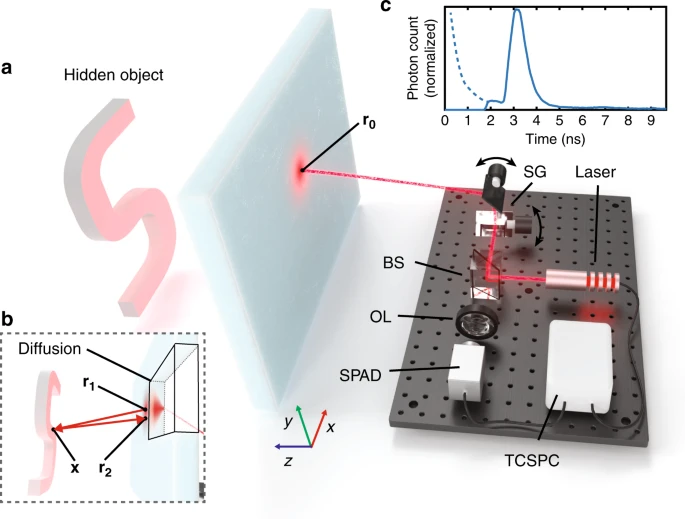EurekAlert September 9, 2020
The presence of scattering places fundamental limits on our ability to image through fog, rain, dust, or the atmosphere. Conventional approaches for imaging through scattering media operate at microscopic scales or require a priori knowledge of the target location for 3D imaging. Researchers at Stanford University have introduced a technique that co-designs single-photon avalanche diodes, ultra-fast pulsed lasers, and a new inverse method to capture 3D shape through scattering media. They demonstrated acquisition of shape and position for objects hidden behind a thick diffuser at macroscopic scales. The technique complements other vision systems that can see through barriers on the microscopic scale because it’s more focused on large-scale situations, such as navigating self-driving cars in fog or heavy rain and satellite imaging of the surface of Earth and other planets through hazy atmosphere…read more. Open Access TECHNICAL ARTICLE

Schematic of 3D imaging through scattering media. Credit: Nature Communications volume 11, Article number: 4517 (2020)